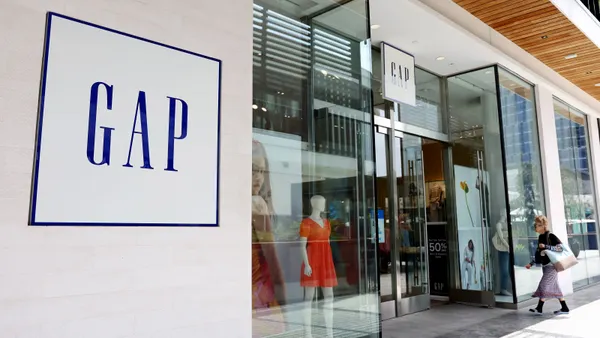Dive Brief:
-
Visa Inc. announced Tuesday a technology enhancement that the company says will speed up checkout times. The company says that "Quick Chip for EMV” cuts as much as 18 seconds from transaction times.
-
The technology is available to retailers as a software download to their EMV-enabled point-of-sale systems, requiring no separate reading equipment or different cards. Users are prompted to dip the chip card briefly in the reader and then remove it, reducing the card’s interaction with the terminal to about two seconds, according to Visa.
-
The Wall Street Journal also reports that Wal-Mart has shaved 11 seconds from its EMV transactions by removing the prompt that asks for confirmation of the purchase total, among other things.
Dive Insight:
If the new Visa technology is as fast as it sounds and works as described, the credit-card company may be getting EMV closer to the quicker, more convenient swipe of mag-stripe cards.
Reading an EMV card takes a bit more time and requires the card to be held by the machine for several more seconds than the instant-read swipe consumers are used to. That, plus the slow rollout of the new system by some retailers, has hampered wide use of EMV.
Just a few extra seconds turns what is otherwise a fairly mindless micro-task is a big ask of people. And, it turns out, it’s also fairly expensive. The Wall Street Journal, citing a survey by JDA Software, notes that a chip card piles on some 8 to 12 seconds per check-out, in part because people are still getting used to using the cards, attempting the mag stripe first process, or requiring attention from the clerk. At one retailer JDA studied, the additional transaction time could add $3.2 million to annual labor costs, Marty Reynolds, JDA vice president told the Journal.
This cumbersome-by-comparison use of EMV cards has been grating to many shoppers—and to retailers. Most say the whole process of making such a fundamental shift should have at least included a personal identification number for greater security.
“We’ve shouted in the dark for a long time,” Mark Horwedel, CEO of Merchant Advisory Group, whose members are large retailers, said on an October conference call with reporters. “This is basically a facade — this claim [by banks] that the reluctance is consideration for the consumer. We’ve all used PIN numbers at ATMS for a long time. Let’s go to something that’s better.”
The new Visa technology doesn’t add this type of security. Still, the shorter and easier process could bode well for EMV use, which is more secure than the magnetic stripe. Look for more such improvements from credit cards, banks, and retailers.














